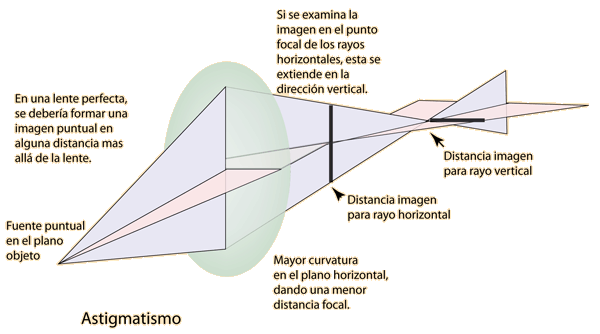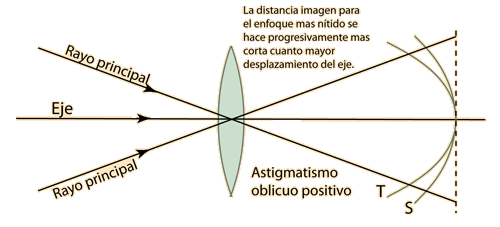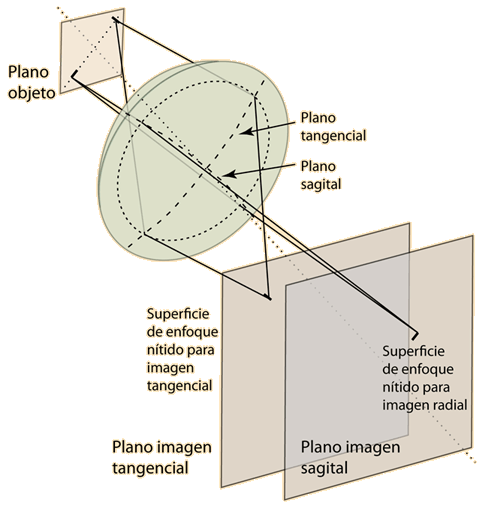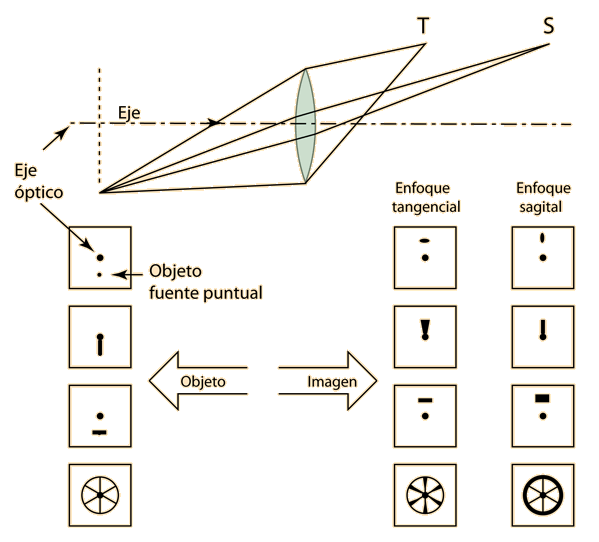Coma
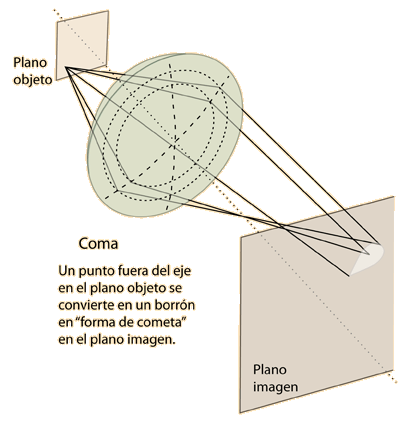 |
El coma es una aberración de las lentes, que provoca que los puntos de luz en el plano del objeto fuera del eje, aparezcan como puntos desenfocados o "cometa" o "coma ortográfica", dirigidos hacia fuera del eje óptico. Una lente con un coma considerable, puede producir una imagen nítida en el centro del campo, pero incrementalmente desenfocada hacia los bordes. En una lente simple el coma se puede corregir parcialmente, flexionando la lente. Las correcciones mas completas, se consiguen usando una combinación de lentes simétricas, sobre una abertura de diafragma central. |
Hecht, 2nd Ed in Sec 6.3 on aberrations gives a careful discussion of coma. For positive coma, rays from an off-axis object through larger radii of the lens contribute a larger oval of light further from the principal focus. |  |
Hecht notes that a little more than half of the light in the image is in the roughly triangular region inside the large oval above, so the image fades as it expands away from the central focus. That encourages the picturing of this image as comet-like.
 |
Coma is shape-dependent, so a lens shape can be found with zero coma for a given object distance. That lens would not be optimum for other object distances. |
For more versatile correction of coma, one can use a combination of two lenses, both of which are corrected for zero coma at infinite object distance. The appropriate separation of these two lenses can correct for coma at various object distances. Coma can also be corrected by an appropriately placed stop, but the placement and size of an optimum stop also depends upon the other aberrations.
| Aberraciones de Lentes |
Conceptos sobre Lentes
"Referencia
Meyer-Arendt
Cap. 5
| HyperPhysics*****Luz y Visión | M Olmo R Nave |
